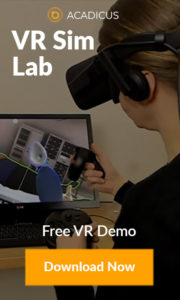
Here is a video of the presentation I gave last weekend at the VWBPE convention , posted by tree.tv, in both a streaming format and high-def download, available here:
http://www.treet.tv/shows/bpe/bpe2009_varchitecture_27mar09/ Other presentations captured by Tree.tv can be seen here: http://treet.tv/shows/bpe2009
Here is a brief outline of what I covered:
- Comparisons of virtual and real architecture
- Main ideas
- Virtual architecture is less rigid, and far more flexible than physical architecture
- Second Life is a ‘user-generated’ environment, and places that are built exclusively by professional content creators that do not engage the end-users in the creation process are often the most dull and lifeless places in all of SL – no matter how perfectly built or well designed they might be.
- Virtual campus spaces should engage as many individuals – faculty, students, community members – as possible – not just one person who goes off to build everything… that’s just as bad or worse than hiring a content developer to build everything for you.
- Architecture should be driven by the end-use, in an ongoing and constantly evolving design process that doesn’t have an arbitrary ‘end’. Virtual architecture doesn’t have to shape us…we can and should keep shaping it.
- People building virtual education spaces are building the foundation for their school’s future virtual endeavors, and have an opportunity to re-think what education means in a virtual environment – not just importing the way we do things in real life.
- Main ideas
- Best practices in developing virtual architecture – framework for approaching projects, borrowing and re-mixing some elements from the AIA’s Handbook for Professional Practice
- Predesign
- Gathering resources, use-cases, program development, construction schedule, context analysis, project budget, architectural style, replica vs. virtual, precedent studies
- Schematic Design
- Blocking diagrams, wayfinding, feedback, etc.
- Construction
- groups, permissions, building teams, etc.
- Predesign
- Case Study: ‘Re-Inventing the Virtual Classroom’ with the University of Alabama
- Wikitecture overview
- Process
- methodology
- Description of the process
- Brief and analysis of the end result
- Concluding thoughts
- Can students, faculty and community members design their own physical-world spaces in the future? Can physical architecture be as dynamic and participatory as virtual architecture?
- Wikitecture overview
Many thanks for Gianna Borgnine for moderating, and to everyone who helped organize this conference. Also, thanks to La Fundación Global Democracia y Desarrollo (FUNGLODE) for sponsoring this presentation.

